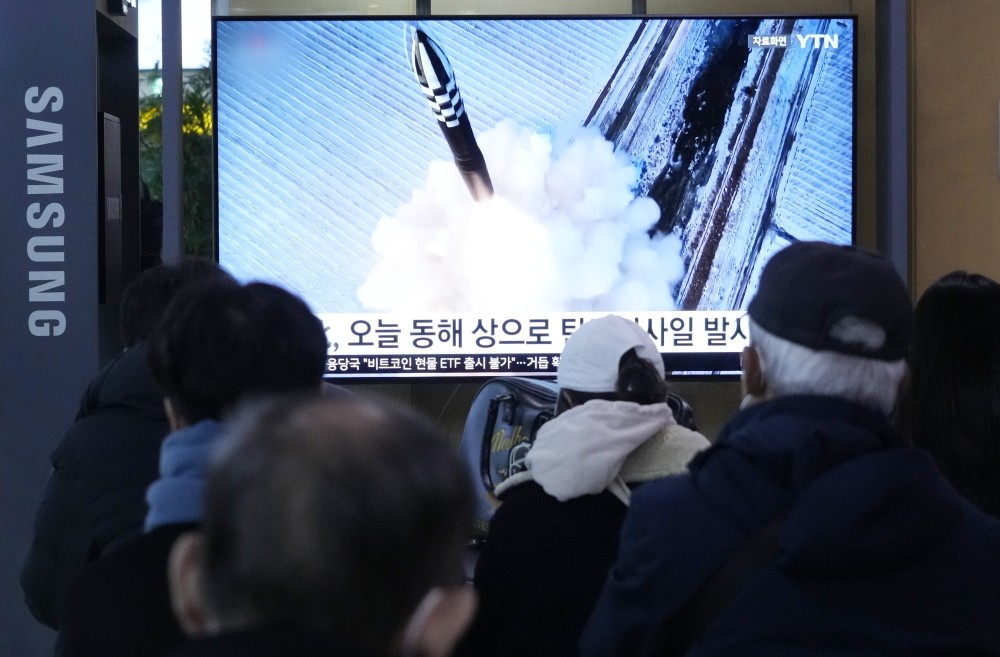14/01/2024
14/01/2024

SEOUL, South Korea, Jan 14, (AP): North Korea fired a suspected intermediate-range ballistic missile into the sea on Sunday, South Korea's military said, two months after the North claimed to have tested engines for a new harder-to-detect missile capable of striking distant US targets in the region.
The launch was the North's first this year. Experts say North Korea could ramp up its provocative missile tests as a way to influence the results of South Korea's parliamentary elections in April and the US presidential election in November.
South Korea's Joint Chiefs of Staff said in a statement that it detected the launch of a ballistic missile of an intermediate-range class from the North's capital region on Sunday afternoon. It said the missile flew about 1,000 kilometers (620 miles) before landing in the waters between the Korean Peninsula and Japan.
The Joint Chiefs of Staff called the launch a provocation that poses a serious threat to peace on the Korean Peninsula. It said South Korea's military will maintain its readiness to overwhelmingly respond to any provocations by North Korea.
The South Korean assessment suggests North Korea could have launched a new intermediate-range ballistic missile, whose solid-fuel engine it said it had tested in mid-November.
The missile is mainly designed to hit US military bases in the US Pacific territory of Guam, which is about 3,400 kilometers (2,110 miles) from Pyongyang, the North's capital. With a range adjustment, the missile can also be used to attack closer targets - the US military installations in Japan's Okinawa island, according to Chang Young-keun, a missile expert at the Korea Research Institute for National Strategy in Seoul.
Built-in solid propellants make missile launches harder to detect than liquid-fueled missiles, which must be fueled before launch and cannot last long. North Korea has a growing arsenal of solid-fuel short-range missiles targeting South Korea, but its existing Hwasong-12 intermediate-range missile is powered by liquid-fuel engines.
Japan's Defense Ministry said its analysis showed the missile traveled at least 500 kilometers (300 miles) at the maximum altitude of 50 kilometers (30 miles), data that suggest North Korea may have fired a short-range and not an intermediate-range missile.
Japan and South Korea said they closely exchanged information about the launch with the United States, but they didn't immediately explain the discrepancy in data.


